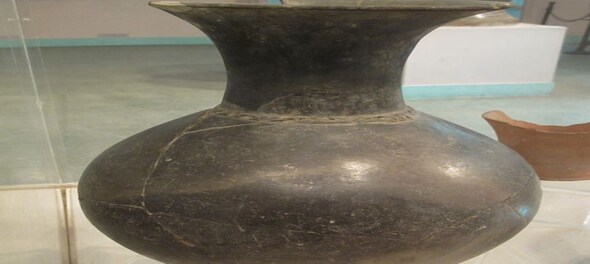
At the Burzahom Neolithic site in Srinagar, archaeologists have uncovered evidence of human settlement patterns shifting from the Neolithic to the Megalithic to the Pre-Historic eras. Burzahom tells the chronicle of life from 3000 BCE to 1000 BCE in northern India in a way that no other site has done. This includes the introduction and spread of lentils across the region.
Evidence from the site shows how early cultures' housing evolved through time. The archaeological evidence indicates that mud structures and, later, mud-brick buildings sprang from underground living pits and spread to the surface. The variety of items unearthed at the site is evidence of the Neolithic men's sophistication as toolmakers and of their proficiency as hunters and farmers.
Also read:
An overview of the site's past
The fact that historians could follow the advancement of these immigrants is remarkable, and it is the main reason why Burzahom is on the World Heritage Sites' Tentative List maintained by UNESCO. Carbon dating has placed the site's peak use between 5000 and 1500 B.C. Pits dug into the earth were originally covered with a thatched birch roof (Burzahom meaning place of birch), but over time, the occupants of the area shifted to living in mud dwellings on the surface.
Both surface-level and underground structures included stone hearths. Antler harpoons, needles, and other tools were among the objects they uncovered. The harvesting tools and pottery (including a redware vessel decorated with a crowned motif and another pot loaded with 950 pearls of carnelian and agate) have been linked by archaeologist Abdul Rashid Lone to trade with civilizations outside of Kashmir.
Of the 40 or so Neolithic sites found in Kashmir, Burzahom is the first. The first significant excavation was conducted by TN Khazanchi between 1960 and 1971 after it had been documented by TT Patterson and H De Terra in 1939.
In Pulwama, you'll find the even earlier site of Gufkral ("potter's cave," again heaped with menhirs, tools, and pottery). Human and canine bones discovered at burial sites in Kashmir suggest that the region's first residents were hunter-gatherers who cultivated wheat, barley, and lentils, tamed sheep and goats, and placed a high value on canines.
Thousands of centuries before the Silk Route merchants climbed the alpine peaks into Kashmir, the tools, art, and lentils may have indicated an interaction with Southwest Asia.
According to the UNESCO Tentative List, Burzahom is comparable to other Neolithic sites on the World Heritage List, such as Stonehenge in the United Kingdom, Choirokoitia in Cyprus, Alps pile dwellings, Lopé-Okanda in Gabon, the Nahal Me'arot in Israel, and the Lenggong Valley in Malaysia.
(Edited by : Sudarsanan Mani)
First Published: Oct 10, 2022 5:58 PM IST
Check out our in-depth Market Coverage, Business News & get real-time Stock Market Updates on CNBC-TV18. Also, Watch our channels CNBC-TV18, CNBC Awaaz and CNBC Bajar Live on-the-go!


Delhi voters can avail free rides from booths to their homes on polling day
May 10, 2024 6:26 PM
Kolkata North: TMC fights 'TMC' in battle reflecting party's Old vs New debate
May 10, 2024 5:14 PM

